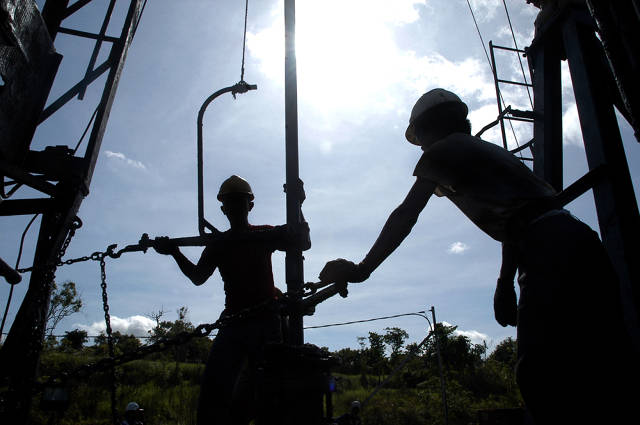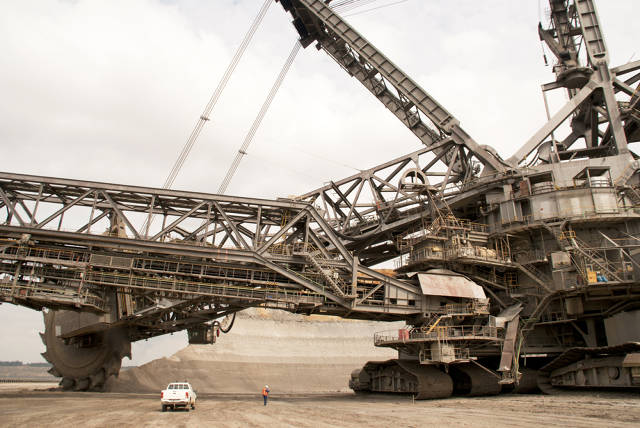Permafrost and Carbon Bombs, and Cabbages and Kings
Greetings
Yep. Warmed permafrost releases CO2 "faster than we thought".
Doesn't it seem that it's always worse than we thought"?
As a matter of fact, Joe Romm notes the same thing
:
'Anyone who tells you the recent literature suggests things will be better than we thought, hasn't read the recent literature. In a 2010 AAAS presentation, the late William R. Freudenburg of UC Santa Barbara discussed his research on "the Asymmetry of Scientific Challenge": New scientific findings since the 2007 IPCC report are found to be more than twenty times as likely to indicate that global climate disruption is "worse than previously expected," rather than "not as bad as previously expected."'
Below_ Greenpeace Report on "14 Carbon Bombs" Amazing photos here (These 14 developments will increase emissions 20% by 2020, thus "locking in" long-term temperature increases in the 5 to 6 degrees Celsius range) (Hat Tip to Reuben)
But, let's not worry about 5 or 6 - 4 is bad enough.
Even restricting the global temperature rise to 4oC, which would require a 'major effort' by the world's nations, would still lead to the 'hellish vision' outlined in the Royal Society Special Issue on Global Warming:'[A] 4°C world would be facing enormous adaptation challenges in the agricultural sector, with large areas of cropland becoming unsuitable for cultivation, and declining agricultural yields. This world would also rapidly be losing its ecosystem services, owing to large losses in biodiversity, forests, coastal wetlands, mangroves and saltmarshes, and terrestrial carbon stores, supported by an acidified and potentially dysfunctional marine ecosystem. Drought and desertification would be widespread....'In such a 4°C world, the limits for human adaptation are likely to be exceeded in many parts of the world, while the limits for adaptation for natural systems would largely be exceeded throughout the world.'
-----------------------
Permafrost:
"Until now, we didn't really know how reactive this ancient permafrost carbon would be — whether it would be converted into heat-trapping gases quickly or not," co-author George Kling, a University of Michigan researcher, said in the statement. "What we can say now is that regardless of how fast the thawing of the Arctic permafrost occurs, the conversion of this soil carbon to carbon dioxide and its release into the atmosphere will be faster than we previously thought. That means permafrost carbon is potentially a huge factor that will help determine how fast the Earth warms."
The study found that ultraviolet rays in sunlight both break down carbon, making it more suitable for microbial consumption, and stimulate soil-dwelling bacteria, which can turn this organic matter into carbon dioxide, the release said.
-----------
Article:
Sunlit Permafrost Unleashes Carbon at Faster Pace
Douglas Main, OurAmazingPlanet Staff Writer
Date: 11 February 2013 Time: 03:15 PM ET
The results are concerning since soils in Arctic regions store at least twice the amount of carbon found in the atmosphere, according to a release from the University of Michigan, from which two of the study co-authors hail.
"Until now, we didn't really know how reactive this ancient permafrost carbon would be — whether it would be converted into heat-trapping gases quickly or not," co-author George Kling, a University of Michigan researcher, said in the statement. "What we can say now is that regardless of how fast the thawing of the Arctic permafrost occurs, the conversion of this soil carbon to carbon dioxide and its release into the atmosphere will be faster than we previously thought. That means permafrost carbon is potentially a huge factor that will help determine how fast the Earth warms."
The study found that ultraviolet rays in sunlight both break down carbon, making it more suitable for microbial consumption, and stimulate soil-dwelling bacteria, which can turn this organic matter into carbon dioxide, the release said.
"Whether UV light exposure will enhance or retard the conversion of newly exposed carbon from permafrost soils has been, until recently, anybody's guess," lead study author Rose Cory, a University of North Carolina researcher, said in a release. "We provide the first evidence that the respiration [or the release of carbon dioxide gas] of previously frozen soil carbon will be amplified by reactions with sunlight and their effects on bacteria."
The researchers analyzed organic content, and carbon dioxide release, from Arctic soil in undisturbed and melting-disrupted areas of the Alaskan Arctic. The findings suggestthawing Arctic soils could function as a "positive feedback" that amplifies climate change, whereby warming soils release more carbon dioxide that helps drive up temperatures, melting even more soil, according to the release.
Reach Douglas Main at dmain@techmedianetwork.com. Follow him on Twitter@Douglas_Main. Follow OurAmazingPlanet on Twitter @OAPlanet. We're also on Facebook and Google+.
-----
The 14 “Carbon Bombs” That Are About To Blow Up The Planet
These projects to increase production of fossil fuels are being planned around the world. But if all of them come to fruition, it may be the last fossil fuels we produce, because the combined effect will be to raise the planet’s temperature disastrously.
If you believe in the possibilities of corporate responsibility--or for that matter, basic human kindness--you probably shouldn’t read Greenpeace’s latest climate changereport. It might shake your faith.

Why? Because its conclusion is so stark and so simple, and yet so widely and willfully ignored: If we go ahead with 14 major fossil fuel projects now on the drawing board (you can see them above), we’ll have a good chance of destroying the world as we know it. Or, to put it less emotionally: We’ll sail right through carbon limits most scientists agree are safe for the atmosphere.
Take a look at the slide show for a graphic sense of the danger. From coal production in Australia, China, and Indonesia, to deepwater oil projects in Brazil and the Arctic, to tar sands in Canada and Venezuela, to shale gas and conventional gas in the U.S. and the Caspian Sea, the world is set for a big push on the dirtiest forms of energy development. Together, Greenpeace says the projected output will increase emissions 20% by 2020, thus "locking in" long-term temperature increases in the 5 to 6 degrees Celsius range. Scientists normally call 2 degrees a relatively safe limit--and until recently that was the consensus in the international community as well.
"With total disregard for this unfolding global disaster, the fossil fuel industry is planning 14 massive coal, oil, and gas projects that would produce as much new carbon dioxide (CO2) emissions in 2020 as the entire U.S., and delay action on climate change for more than a decade," the report says.

Of course, you might think the numbers skewed because they come from beardy environmentalists with an agenda. Except, in this case, the numbers aren’t Greenpeace’s. They were commissioned from Ecofys, an environmental consultancy. More than that, the report says essentially the same thing as the International Energy Agency (which last year reported that we could not burn more than one third of fossil fuel reserves by 2050 to remain within 2 degrees), and the World Bank which says we’re on course for a 4-degree increase by century’s end.
Greenpeace says the 14 developments would produce 54,674 million tons of coal, 29,400 billion cubic meters of natural gas, and 260,000 million barrels of oil--but add 330 billion tons of CO2-equivalent emissions by 2050 (see here for the methodology). To stay within the 2-degree increase, emissions have to start falling before 2015, which means canceling, rather than rushing ahead, with some of the plans on the table. That doesn’t seem likely--but it is the wide consensus not only of the enviro-lobby, but of plenty of sensible people who’ve studied the issue

0 Comments:
Post a Comment
Subscribe to Post Comments [Atom]
<< Home